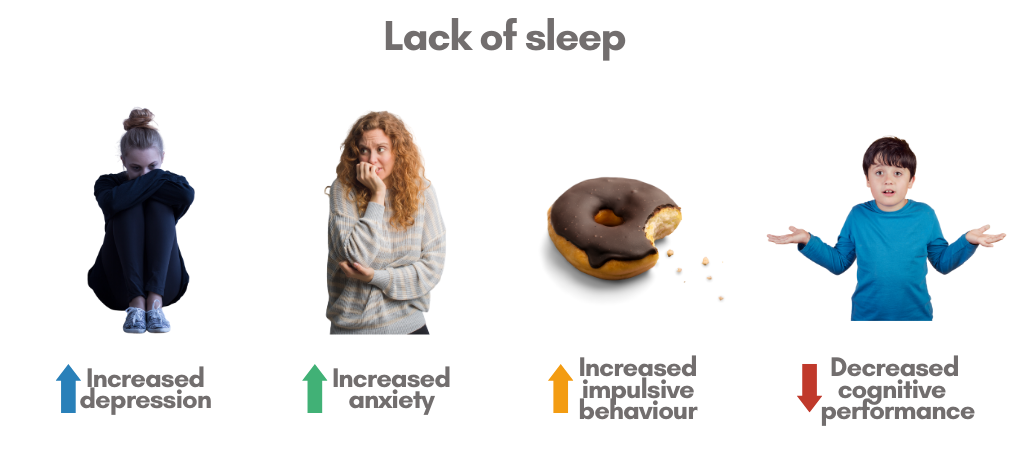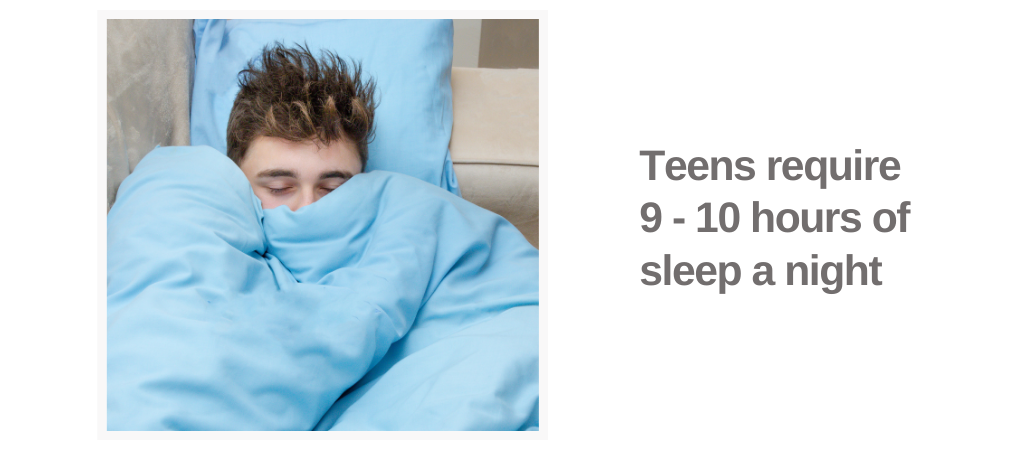3 Strategies to Help Improve Sleep
Given the importance of getting a good night’s sleep, let’s look at three strategies to help your child or teen catch as many quality winks as possible.
1. Wind-down for sleep is important
Here is another idea that children and teens may not love, but the earlier you get them into this habit, the better.
A wind-down component at least 60-90 minutes before bed is essential to help signal the body that it is time to prepare for sleep.
And when it comes to winding down, there are two main rules.
First, you need a relaxing, enjoyable activity before bed.
One example of an effective wind-down activity is simply taking a bath or showering before bed.
Haghayegh et al. (2019) found that taking a bath or shower 1-2 hours before bed helped people fall asleep faster, sleep longer and sleep more efficiently.
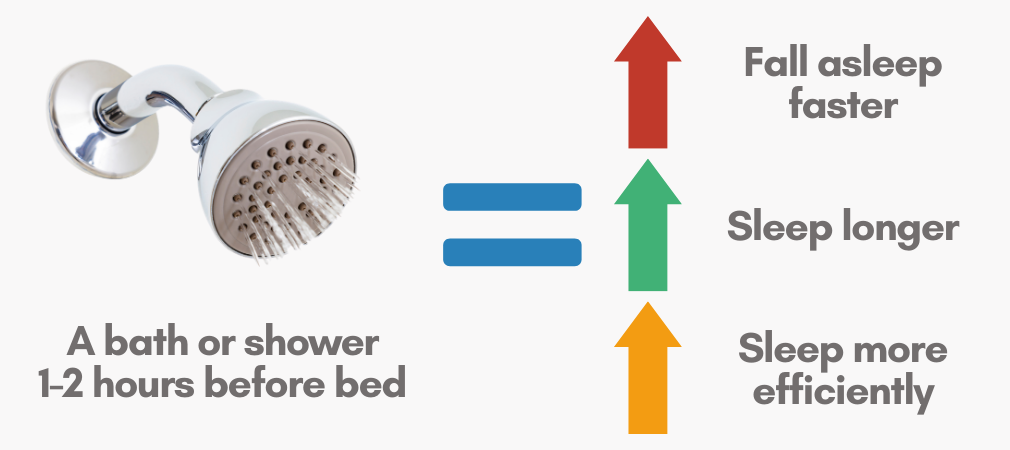
And they also found that hot baths or showers tend to work better.
Even though the temperature is warm, the hot water stimulates the body's thermoregulatory system, which helps to lower the body's core temperature.
And a cold body temperature helps to signal the body and the brain that it's time for sleep.
So, if you are wondering how warm the water should be, the researchers found that the temperature should be between 40-43 degrees Celsius.
And for anyone who prefers the Imperial System, you want the temperature to be between 104-109 degrees Fahrenheit.
2. Reduce blue light
The second rule for the wind-down phase is to reduce blue light from devices such as cell phones, tablets and computer screens.
Devices are everywhere, and they have been woven into the daily lives of most families.
As such, cell phone and tablet use are standard for most of us throughout the day to varying degrees.
People, including up to 90% of children and teens, use devices to help wind down in the evening before bed.
The primary challenge with this is that most electronic devices emit blue light, stimulating the brain and making it increasingly difficult to fall asleep.
So, in an ideal world, devices that emit blue light would be eliminated at least 2 hours before bed.
But given how pervasive devices are in most people's lives, this probably won't happen. Yet, it's essential to reduce the impact of blue light.
Shechter et al. (2017) found that people who wore amber-tinted lenses for 2 hours before bed when looking at electronic devices experienced improved sleep.
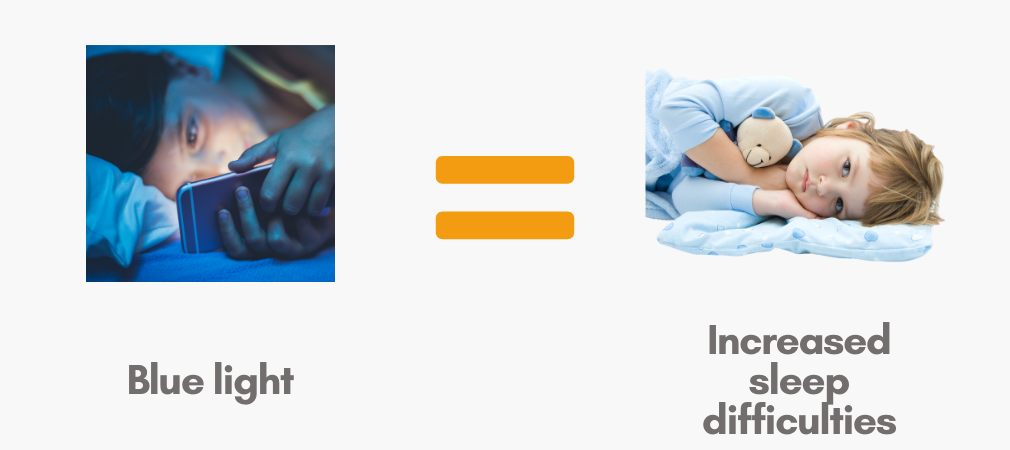
Study participants, on average, slept 30 minutes more each evening when they used the amber-tinted glasses.
And if wearing amber-tinted glasses before bed doesn’t feel like a great option, there are other options for reducing blue light.
If you have a night-shift mode on your device, I encourage your child or teen to use it. This will help to minimize the amount of blue light from the device.
At the very least, turning down the brightness will be helpful.
3. Keep consistent sleep and wake times
If there is one rule that most sleep experts agree on, this would be it.
It's essential to go to bed and wake up at the same time each day.
This rule holds whether it’s a weekday, weekend, or even if you didn’t sleep well the night before.
Mellor et al. (2017) found three important patterns to support successful sleep and overcome difficulties with insomnia.
Their findings include the following:
- Keep a consistent sleep/wake cycle at all times (even if you feel tired)
- Avoid watching TV or using electronic devices in bed (the mind should associate bed with sleep)
- Naps generally aren’t advisable during the day, especially if you struggle with sleep (this can also be an incredibly lousy pattern for teenagers if they sleep too little at night, then nap for several hours after school before returning to bed again late that same evening)
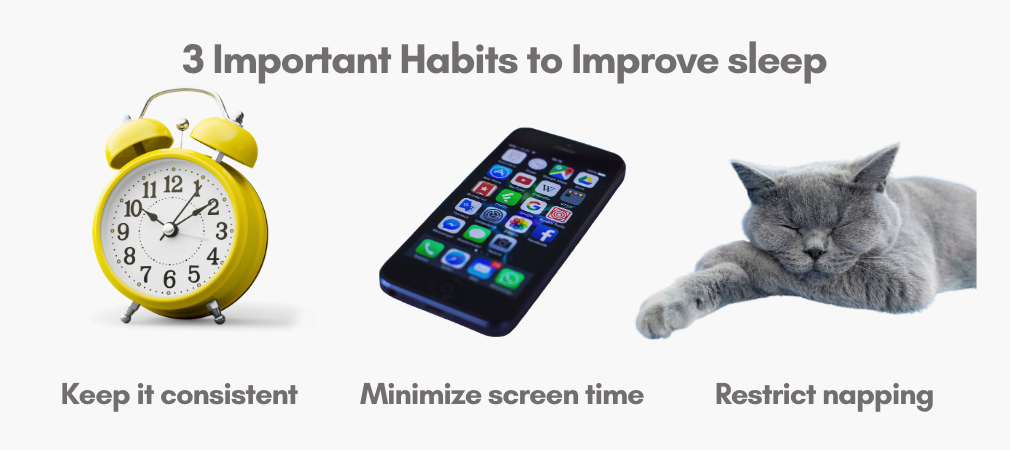
So, even though it might be a little bit challenging for your child or teen to go to bed and wake up consistently at roughly the same time each day, it’s a pattern that’s well worth pursuing if you hope to regulate the sleep-wake cycle in their body effectively.
Are you surprised at how impactful sleep is on mental health?
What strategies do you use to help your child or teen prioritize sleep?
Join the conversation on Facebook!
